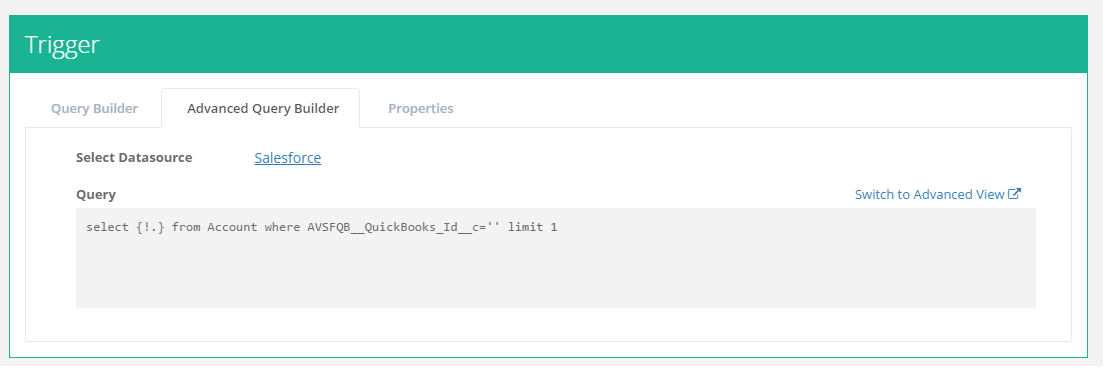2022
Page History
| Panel |
|---|
| Panel |
|---|
Definition |
"Trigger" is the mechanism to activate/ Extract information from the source system for use in Target system . In DBSync the Trigger section is as shown below, Trigger facilitates the information to be read from the source system through a mechanism called Query Builder.
There are a advanced version of query building mechanism , where complex queries involving across multiple objects are created , result set can also be viewed at run-time making it convenient for the user to change the query as and when.
| Panel |
|---|
Query Builder |
- Initially, when the user lands on this Workflow detail page , he/she will have to select the Data source and the object on which the query is to be built
- He/She can add N number of condition for the query being built by clicking on "Add New Condition"
- For adding a condition user has to select the field, select the operator and enter the value with in ' '
- Basing on the number of conditions added , the filter logic is auto populated and by chance if he/she wishes to change the logic they can do by entering the value
- Clicking on the preview button adjacent to filter logic will show the result set in Query Result section.
The below table demonstrates the operators supported and meanings of each operations .
S.No | Operator Name | Operator Description |
|---|---|---|
1 | equals |
|
2 | not equals to |
|
3 | greater than |
|
4 | greater than equals |
|
5 | less |
|
6 | less than equals |
|
7 | like |
|
| Panel |
|---|
Advanced Query Builder |
The advanced query builder lets the user to build complex queries , the advanced query builder contains three section
- Schema , which loads up the whole of source schema with whole table, can be expanded to show the columns with respective data types
- Query Builder, where query will be pre loaded for Templates loaded from Template library and a user can write their own queries .
- Query Result , which will show the result for relational data models and for XML structures the data is shown in tree format.
